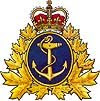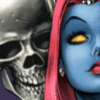In October of 1996, I sat in a classroom at the American Motorcycle Institute, as my formal mc mechanic training began in earnest. One of the very first pearls of wisdom which was dropped our way, was in the form of a question. "Can any of you tell me", our instructor Mike Geraghty asked, "what is the lowliest and least important job in a service area?" A few answers came back, sweeping out the shop and changing tires were mentioned a couple of times. I held my tongue...
"The truth is", Mike continued, "there is no job which is either lowly or not important". Sweeping out the shop contributes to the overall cleanliness of the shop and therefore the safety aspect as well. Safety in the workplace is paramount. "When it comes to tire changes", he stated, "there are few jobs which are in fact as important".
The logic behind this rapidly became abundantly clear to all of us. Properly mounted and balanced wheels are essential to a bike's good handling characteristics and stability. It is a safety factor. With this being said, there are far too many shops and wrenches who believe that this is a menial task, best suited for the 'shop nigger'. The FNG... the low man on the totem pole. An apprentice will usually be assigned this job, as it is dirty and considered beneath more advanced mechanics. This is a mindset which has to stop. It is prevalent mostly in dealerships, I find.
Balancing tires is, like many other aspects of motorcycle repair and maintenance, an art form. To be done properly, the shop hand has to know about tires, their construction and most importantly, where to find either the heavy or light spot on the carcass of the tire. This is marked differently by every tire manufacturer. Many do not mark their tires at all, so it is up to the wrench to know to look inside the tire carcass to find the seam, which would constitute the heavy spot. Wheels also have a light and a heavy spot. Again, some wheels are marked by the manufacturer, some are not.
A good rule of thumb for laced (spoked) wheels, is that the point on the rim which holds the valve stem, can generally be considered the heavy spot. Find the heavy spot on the tire and mount it 180 degrees from the valve stem. When done properly and accurately, it is possible to balance a wheel to 0 without the use of weights. The same method holds true for some cast wheels, but not all. Research and due dilligence is required for a competent mechanic to acquire knowledge of such things. I would pride myself on my ability to do this for our customers. By the same token, I was also able to lace and true wheels very well. For those of us who ride, it doesn't take much to make us understand that those two wheels are the only things that separate us from the road and which enable our steeds to perform as they should. They are of primary importance...
I have of late witnessed half-hearted attempts at balancing wheels. Many 'shade-tree mechanics' (as well as those who actually get paid for this), fail to grasp the importance of such basic motorcycle knowledge and rely on the addition of weights to make up for their lack of skill or expertise. Handing a wheel to a customer which has a half-pound of lead hanging off it and asking to believe that it is in fact 'balanced', is a bit of an insult to their intellect. What it DOES reflect, is a lack of knowledge and a poor work ethic. It also leads me to believe that the other senior mechanics and service manager, have the same lacksadaisical approach to their work. In other words, it does not inspire confidence and would certainly dissuade a rider from any further visits to said 'service department'.
Motorcycle dealerships are there for one thing: to move their product. To get as many units out the door as they possibly can. Yes, we've all heard the radio adverts from these companies, flogging their wares and assuring us at the same time, of how their service department is staffed by such competent and professional individuals. But this is only smoke and mirrors. Sure, many shops will also hope to cash in on the sale of custom parts so their customers can 'create a bike that is truly theirs', but you can't believe that they are all that interested in parts sales. Not when their staff lack the wherewithall to do a decent job of it. Expensive mass advertising campaigns sell their motorcycles, not the shop's reputation.
In good aftermarket shops (small independently-owned and operated motorcycle shops), it is another world entirely. And that is where I went to work upon graduating AMI in March of 1997. I went there because I wanted to be the best I could be. Not as a corporate cog, but as a competent and trusted wrench. I picked the shop I wanted to work in, based upon what I knew of the owner and his reputation as a stellar mechanic. I wanted a mentor who could teach me to apply the knowledge I had gained in Daytona Beach. I was not disappointed. He was every bit as demanding and uncompromising as my tutors at AMI had been. The shop's reputation was it's life blood. I never saw Garnett advertise but we never had a drought of customers. The shop's reputation was based solely on word of mouth. They came from across Canada, the US and even Europe. The quality of work that shop turns out, your attention to detail, your knowledge and understanding of your customer base, will make you or break you.
Garnett was into building ground-up customs way before any of these effete, 'me too' TV shows hit the airwaves. Tailoring a bike for a customer is like tailoring a suit. Every piece if selected based on the physical requirements of the rider him or herself and what type of riding they wanted to do. A bike first and foremost has to fit. Starting with the frame. Ergonomics is the key word here. Frame, engine, tranny, wheels, forks, oil takn, gas tank, suspension, seat. From the rolling stock, you could then concentrate on the myriad of specifics, such as handlebars, risers, controls, grips, foot pegs, lights, signals, fenders...
Selecting the wheels alone could take weeks, owing to the dizzying array of types and models available. Countless hours would be spent poring over parts catalogs, finding each individual part that would meet the customer's requirements for form and function. As parts came in and the project began to take shape, the excitement in the shop was often palpable. The day which marked the arrival of the painted parts (frame, fenders, tanks) was always a big moment. That was when the visualizing started.
All this to say that those who find themselves in the employ of the big corporations, are often not at the top of their game. But if they work on our steeds and take our lives in their hands, they really, really ought to be. This is not simply one man's opinion. It is the opinion of someone who has actually worked in the industry and knows, sees the difference between the two camps on a regular basis. Don't get me wrong, not every aftermarket shop is manned by such stellar individuals. There are many such shops who's only goal is to emulate their TV-based pretenders, building improbable, non-functional 'choppers', which they then sell to the uninitiated for insane amounts of money. There is a huge difference between a custom-built motorcycle, and a wannabe chopper that will be pretty but spend most of it's time in the back of a pickup truck, or sitting on the side of the road.
Do your homework.
Caveat emptor.

















1 comment:
kul post !
Post a Comment